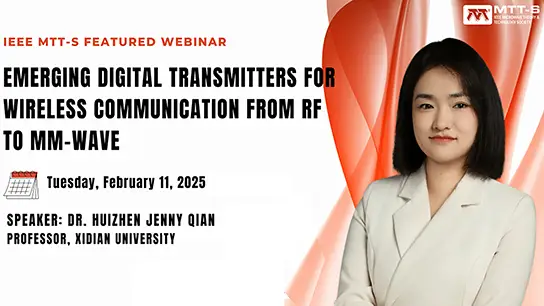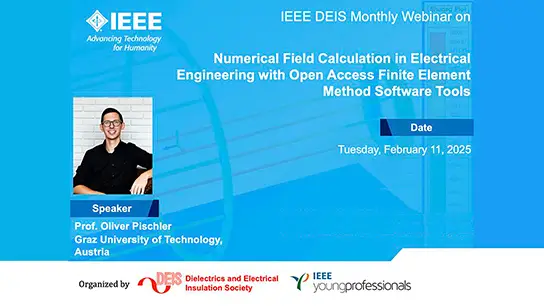-
Members: FreeSSCS
IEEE Members: Free
Non-members: FreePages/Slides: 22
12 Nov 2018
Abstract
Successive approximation Analog to Digital Converters (SAR ADCs) have become one of the dominant types of ADC. SAR ADCs are extremely efficient when working at moderate sampling speeds and at moderate resolutions. Through interleaving, SAR ADCs can operate at very high sampling rates. This presentation traces the evolution of the SAR architecture, beginning before the IC age. Some of the techniques that make CMOS SAR ADCs so effective are highlighted. Techniques that overcome limitations of the SAR architecture are described.
Speaker Biography
Michael P. Flynn received the Ph.D. degree from Carnegie Mellon University in 1995. From 1995 to 1997, he was a Member of Technical Staff with Texas Instruments, Dallas, TX. During the four-year period from 1997 to 2001, he was with Parthus Technologies, Cork, Ireland. Dr. Flynn joined the University of Michigan in 2001, and is currently Professor. His technical interests are in RF circuits, data conversion, serial transceivers and biomedical systems.
Michael Flynn is a 2008 Guggenheim Fellow. He received the 2016 University of Michigan Faculty Achievement Award. He received the 2011 Education Excellence Award and the 2010 College of Engineering Ted Kennedy Family Team Excellence Award from the College from Engineering at the University of Michigan. He received the 2005-2006 Outstanding Achievement Award from the Department of Electrical Engineering and Computer Science at the University of Michigan. He received the NSF Early Career Award in 2004.
Dr. Flynn was Editor-in-Chief of the IEEE Journal of Solid-State Circuits from 2013 to 2016. He is a former Distinguished Lecturer of the IEEE Solid-State Circuits Society. He served as Associate Editor of the IEEE Journal of Solid-State Circuits (JSSC) and of the IEEE Transactions on Circuits and Systems. He serves on the Technical Program Committee of the European Solid-State Circuits Conference and is chair of the Data Conversion Committee of the International Solid-State Circuits Conference. He formerly served on the Technical Program Committees of the Asian Solid-State Circuits Conference and the Symposium on VLSI Circuits.
Successive approximation Analog to Digital Converters (SAR ADCs) have become one of the dominant types of ADC. SAR ADCs are extremely efficient when working at moderate sampling speeds and at moderate resolutions. Through interleaving, SAR ADCs can operate at very high sampling rates. This presentation traces the evolution of the SAR architecture, beginning before the IC age. Some of the techniques that make CMOS SAR ADCs so effective are highlighted. Techniques that overcome limitations of the SAR architecture are described.
Speaker Biography
Michael P. Flynn received the Ph.D. degree from Carnegie Mellon University in 1995. From 1995 to 1997, he was a Member of Technical Staff with Texas Instruments, Dallas, TX. During the four-year period from 1997 to 2001, he was with Parthus Technologies, Cork, Ireland. Dr. Flynn joined the University of Michigan in 2001, and is currently Professor. His technical interests are in RF circuits, data conversion, serial transceivers and biomedical systems.
Michael Flynn is a 2008 Guggenheim Fellow. He received the 2016 University of Michigan Faculty Achievement Award. He received the 2011 Education Excellence Award and the 2010 College of Engineering Ted Kennedy Family Team Excellence Award from the College from Engineering at the University of Michigan. He received the 2005-2006 Outstanding Achievement Award from the Department of Electrical Engineering and Computer Science at the University of Michigan. He received the NSF Early Career Award in 2004.
Dr. Flynn was Editor-in-Chief of the IEEE Journal of Solid-State Circuits from 2013 to 2016. He is a former Distinguished Lecturer of the IEEE Solid-State Circuits Society. He served as Associate Editor of the IEEE Journal of Solid-State Circuits (JSSC) and of the IEEE Transactions on Circuits and Systems. He serves on the Technical Program Committee of the European Solid-State Circuits Conference and is chair of the Data Conversion Committee of the International Solid-State Circuits Conference. He formerly served on the Technical Program Committees of the Asian Solid-State Circuits Conference and the Symposium on VLSI Circuits.


